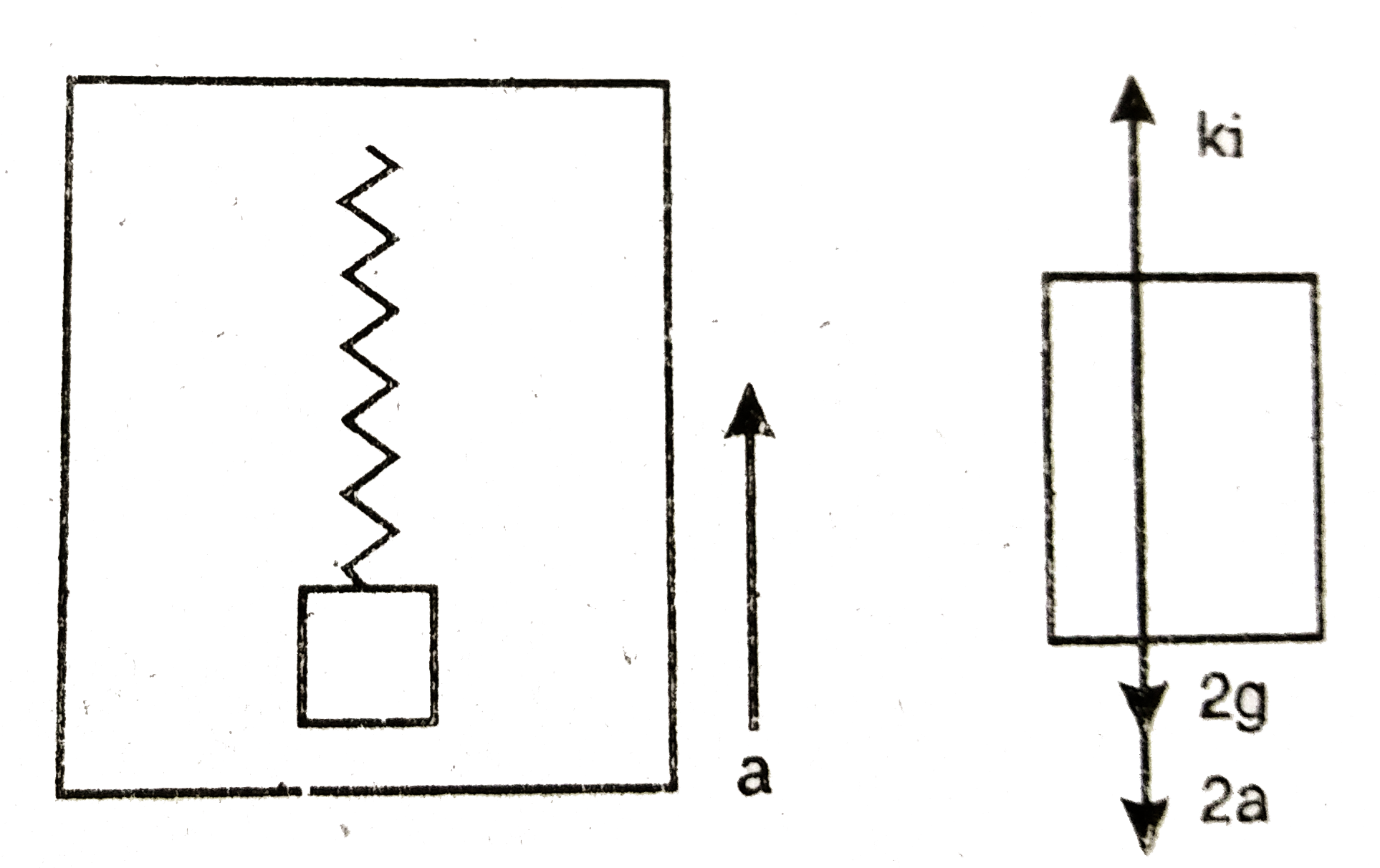The force of buoyancy exerted by the atmosphere on a balloon is B in the upward direction and remains constant. The force of air resistance on the balloon acts opposite to the direction of velocity and is proportional to it. The balloon carries a mass M and is found to fall down near the earth's surface with a constant velocity v. How uch mass hsould be removed from teh balloon so that it may rise with a constant velocity v?
Givwen , a=2ms2
kl−(2g+2a)=0

→kl=2g+2a
=2×9.8+2×2
= 19.6+4<br>rarr l= 23.6/100<br>=0.236≈0.24m
When 1 kg body is added, tota mass =(2+1)kg=3kg
Let elongation be l1
∴kl1=3g+3a=3×9.8+6
→l1=33.4100
0.33.4≈0.36
Further elongation = l1−l
0.36−0.24=0.12m.
Topper's Solved these Questions
- NEWTON'S LAWS OF MOTIONBOOK - HC VERMACHAPTER - NEWTON'S LAWS OF MOTIONEXERCISE - Objective 2
9 Videos
- LAWS OF THERMODYNAMICSBOOK - HC VERMACHAPTER - LAWS OF THERMODYNAMICSEXERCISE - Short Answer
15 Videos
- PHYSICS AND MATHEMATICSBOOK - HC VERMACHAPTER - PHYSICS AND MATHEMATICSEXERCISE - Exercises
34 Videos
Similar Questions
A balloon carring some sand is moving down with a constant acceleration a0. How much mass of sand should be removed, so that the balloon move up with same acceleration?
View SolutionA balloon of mass m is descending down with an acceleration How much mass should be g2 removed from it so that it starts moving up with same acceleration?
View Solution
Knowledge Check
A balloon with mass m is descending down with an acceleration a (wherea<g) . How much mass should be removed from it so that it starts moving up with an acceleration a?
A2mag+aB2mag−aCmag+aDmag−aA balloon with mass m is descending down with an acceleration a where a
A2mag+aB2mag−aCmag−aDmag−aA ball is thrown vertically upward with a velocity u from balloon descending with a constant velocity v. The ball will pass by the balloon after time
Au+v2gB2u+vgC2u+2vgD(u+v)g
A balloon of mass m is descending down with an g/2 acceleration How much mass should be removed from it so that it starts moving up with same acceleration
View SolutionA balloon with mass m is descending down with an acceleration a (wherea<g) . How much mass should be removed from it so that it starts moving up with an acceleration a?
View SolutionThe air inside a balloon exerts pressure in ………….. direction.
View SolutionA balloon is floating in the air. In which direction is pressure acting on the balloon?
View SolutionA gas filled balloon moves up. Is the upward force acting on it larger or smaller than the force of gravity?
View Solution
